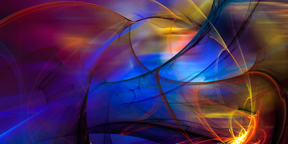

film as a medium

As a medium, film is unique because it captures life in a way that cannot be captured through other forms of art, like painting or photography.
Experimental film is a term for moving images that explore the human condition, nature, or fantasy in ways that haven’t been traditionally explored before. “Experimental film” includes a wide range of works, from a video performance of a heavily made-up woman smearing her face on a pane of glass (Pipilotti Rist, Be Nice to Me https://www.youtube.com/watch?v=nYDh_D1G0hU) to Wes Anderson’s Moonrise Kingdom. These are films in which filmmakers and artists are experimenting with the form (think jump cuts, overlays, the use of text on screen, films that use both animation and live action) or content. Let’s keep in mind that most filmmakers aren’t experimenting the way scientists are, with the use of the scientific method that we all learned back in our middle school days. But we do know that they’re playing with (some quite methodically and others more freely) and therefore expanding the genre. Their intent isn’t to continue in the way mainstream films have been made. Instead, they want to challenge it. Experimental film is an aesthetic and aural art form. Film inherently takes some of the most expressive elements from other artistic mediums and combines them into a magnificent mixure of sight and sound. All films have elements of photography, music, painting, dance, etc.
What is AVANT-GARDE FILM?
It is important to note that “avant-garde film” was a term first used to describe Dadaist and surrealist films of the 1920s. A film that’s still widely regarded as one of the most avant-garde films in history is Luis Buñuel and Salvador Dalí’s 1929 film, Un Chien Andalou(https://www.youtube.com/watch?v=yCl_8522FF0). The film opens as a man causally sharpens a straight razor on a piece of wood. Wagner’s powerful, imposing score drives the action forward. Cigarette smoke unfurls as he concentrates on his task, glancing at the moon. The man opens the eyelid of a calm woman and slices her eyeball in half with the straight razor. The moon is temporarily spliced in half by the horizontal movement of a stray cloud. The woman’s eye spits out a gelatinous substance.
What is VIDEO ART?
“Video art” is a really flexible genre, and its ambiguity is a gift for experimental artists. It’s art that uses the moving image as its medium. Instead of paint, video artists use the camera and the technology’s unique qualities. The canvas is the screen. The term is broad and can reference anything from a tightly edited short film with a beginning, middle, and end, to one that has none of those typical narrative guideposts (or even end credits for that matter) to a filmed performance in which an artist walks around a square in an exaggerated manner (a Bruce Nauman piece, aptly titled Walking in an Exaggerated Manner around the Perimeter of a Square)https://www.youtube.com/watch?v=oDhuZ2Ya2wM. And of course, video art catches all other video pieces that lie between the spectrum of a short film and a video performance, such as music video.
how to create one ….some easy steps to follow...
Sketch your ideas and create a storyline.
It's very useful, even if your film is non-linear and abstract. That way you can organise yourself better too.
If you're shooting digitally, do as many takes as possible.
Do different angles and settings. You might surprise yourself choosing the take you never thought of. Experiment also with different backgrounds, and if you're working with people ,you might want to make them repeat a scene until they perform it the way you had it in mind for it to be.
Learn well your edition programs so you can take the best from them.
There are hundreds or even thousands of tutorials for most edition programs, available online. Give them a look before you start editing. You can come up with great ideas that will enhance your film. Specially if you're working on none or little budget, with nowadays edition software you can achieve amazing things at post-production.
Don't exceed yourself with the camera shaking and lens or edition bluring.
Even when your film is abstract, most expectators can tell when bluring or shaking was a desired effect and when was due to unskilled recording. This effects and filters can be confusing and disorienting if abused.
Choose a palette for your film-.
The palette in a film is as important as in any plastic visual art. Be consistent to your genre and be consistent between takes. Playing with the palette to manipulate the viewer's perception it's a great idea too.
If you have performers, make sure they learn their parts and you've casted them correctly.
Look at the world around you, the characters you see there, and how they move through space. You never know when you'll see the perfect performance from someone who is just walking down the street. The more you observe the world around you, the more you'll be able to explain what you want from designers, photographers, and actors.
Pay good attention to what you see thru the viewfinder.
Ok, so you're on no budget and you're learning...Precisely! That doesn't mean you can't be careful with your settings and backgrounds, with your angles, with the lighting. If you're doing stopmotion....please no hands!
Remember the music has a great effect on the expectators perception.
Take your time to find suitable music and sound effects. It is a very time consuming part of edition, but it pays off when you finally find the perfect sound.
Useful link:
http://listverse.com/2011/08/11/top-10-avant-garde-filmmakers/
